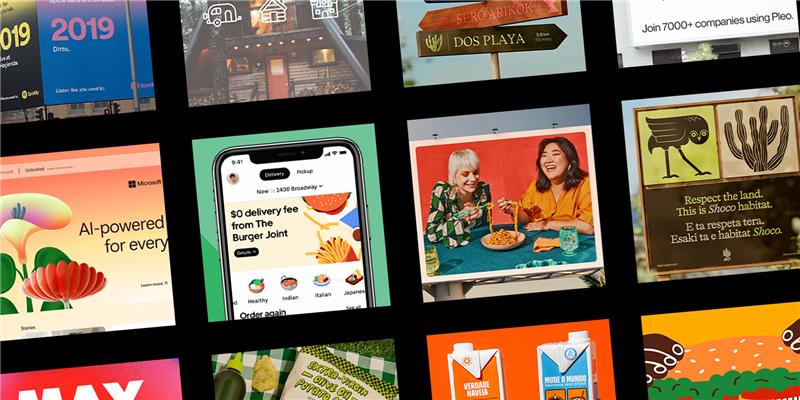
Delight your audiences as they move through the journey to purchase with creative that matches their intent, aligns with strategic insights.

The average click through rate on a digital ad is 0.17%; less than two clicks per 1,000 impressions. Consumer trust in brand-driven advertising is in sharp decline and has been for quite some time; eye tracking studies clearly show that people rarely look at banner ads anymore. We’ve reached the point where consumers would prefer to hear the opinion of trusted and ‘authentic’ individuals and influencers, above the brands themselves.
According to research by Statistica, only 23% of British consumers, and 27% of US consumers, think their purchase decision is influenced by ‘great’ brand advertising. For this reason, in 2016, many brands and businesses began to align themselves with social media influencers. These new influencers are fundamentally content creators, representing a totally new way for brands and businesses to go about creating content, while also providing the opportunity for the individuals to showcase their content collaborations on a global scale.
It comes as little surprise that millennials, Gen Xers and baby boomers (who fall within the 18-35 age range) are the driving force behind this ‘creator economy’. The Economist has dubbed them “Gen-Narrators”. Nick Blunden, global managing director of The Economist, speaking in an interview with Adweek, describes them as “a cohort of influencers who both are sophisticated media consumers whose reach is coveted by not only media companies but also brands…They curate, they consume and they create. And that’s what makes them influencers,” he explains. “They don’t just take on broad information, they DJ with it. They remix it and send it out…And if you engage with them in the right away, and you create content for them but you accept that they’re going to want to customize, curate and remix that content and make it their own and pass it on, then that’s a really interesting opportunity.”
For many businesses, this represents a very different way of working. There was a time when social media was counter-culture, but today YouTube, for example, is mainstream media, having grown into an enormous community and business model. Savvy influencers are recognising the need to diversify as much as possible, creating content for as many platforms as possible and keeping themselves versatile. As the influencer space becomes ever more crowded, the competition to have content seen is getting fiercer and fiercer. Those who extend their reach beyond one social platform or network to a few will be more likely to succeed in the long term, and be less affected by changes in content policy etc across individual networks.
Businesses of all shapes and sizes have the opportunity to evolve their content strategies, to embrace this ‘creator economy’. While those with deep pockets will undoubtedly be able to afford the creators with the bigger price tag, smaller businesses can still have impact if they take a more refined and creative approach. There are a variety of ways to go about this and the question businesses need to be asking themselves right now is is their in-house creative still making the cut? With the democratisation of content creation, it’s now easier than ever to create content: everyone can in effect be a digital marketer. But making cut-through is increasingly going to rest on social talent and seeking out untapped genres.
Subscribe to our monthly newsletter.
Over this coming year, we’re likely to see the growth of creator business networks, where talented creatives are funnelled into a platform that connects them with businesses seeking content and creative concepts. Once these platforms reach tipping point, they can adjust pricing in real-time, and ratings will give businesses the best possible matches. One such company active within this space is Social Native, whose technology automates the entire creative process, matching businesses and brands with relevant creators based on interests and brand affinities. Brands can create a library of owned content that can be used and reused across all of their marketing channels. It claims that through its community of creators, a business could have 15 long-form videos created within a week, for example.
Crowdsourcing platforms such as Talenthouse and Tongal are another way for businesses to go about tapping into the creator economy. Surfwear brand Quiksilver, smoothie shop Jamba Juice and the pop band One Direction are just a few of the brands that have sought creative help this way. Companies pay a fee to post their creative brief and musicians, photographers, writers, designers, videographers and other artists can pitch directly for the work. The best submissions earn payouts of a few hundred dollars to many thousands. Bloggers Required similarly brings together a community of blogger influencers, and allows businesses to publish briefs which bloggers can pitch in for.
There’s no doubt that awesome content wins every time. The ability to tap into a crowd to spark big ideas is where branded content is heading, and there’s no doubt this is increasingly what consumers are more interested in seeing and trusting.
Delight your audiences as they move through the journey to purchase with creative that matches their intent, aligns with strategic insights.
Delight your audiences as they move through the journey to purchase with creative that matches their intent, aligns with strategic insights.
Subscribe to our monthly newsletter.